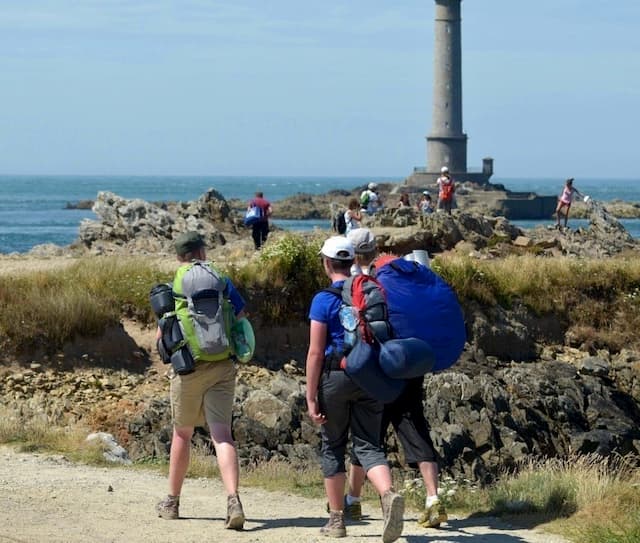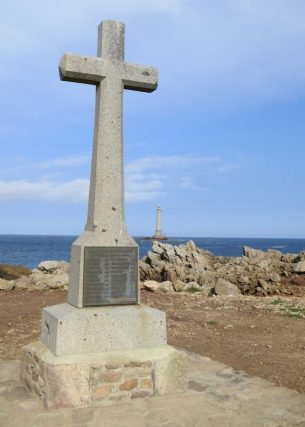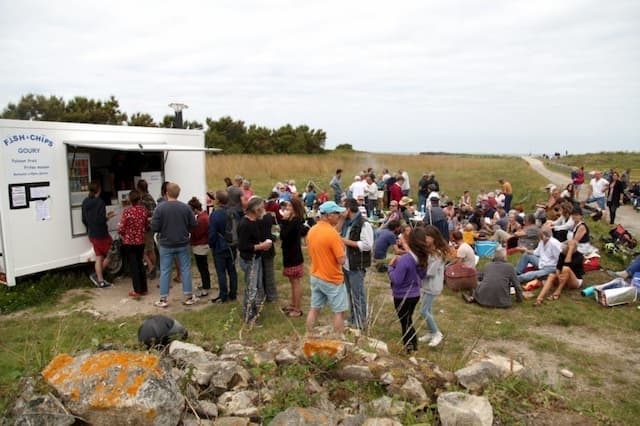Our Holidays in France: Heading for the Open Sea at Goury in the Cotentin

Do you want to go to the end of the world … without leaving France? Direction Cape de la Hague, in the English Channel, and more precisely to Goury, a little piece of Ireland in Normandy.
The impression of being at the end of the world. Sometimes even, in bad weather, when the wind blows more than 130 km and the Raz Blanchard (the most powerful current in Europe) seems to cover the whole sea with white foam, the end of the world can seem near … Welcome to the Hague; and more exactly in Goury.
At the end of the world…

Suddenly, a ray of sunshine illuminates this western end of the Cotentin peninsula . The landscape remains wild, but so much more welcoming. The small stone walls of the country, the fields which make you think furiously of Ireland, the sweet smell of the sea spray, the Goury lighthouse which sits 800 meters off the Cap de la Hague… Here, we feel free; social distancing does not need to be imposed by prefectural decree.
To the left of the only road that leads to this end of the world, the customs officers’ path. If this hiking trail (GR 223) runs along the entire coast of La Manche and offers 2,600 km of trails, one of the prettiest sections will take you from Goury to the cliffs of Jobourg.
After six kilometres of walking, you can sit on the terrace of a café, overlooking the sea at an altitude of almost 130 meters, with the impression of being able to almost touch the Channel Islands.
The raz Blanchard

With the naked eye, we cannot see it. But when we are in it, we feel it pass literally and figuratively. The Raz Blanchard, a tidal current breaking off the coast of Cap de la Hague, is the strongest current in the entire Channel, with a speed of up to 6 meters / second (the average in the Channel being around 1.5 meters /second).
A power due to the morphology of the coast at this location – a gully between the Cap de la Hague and the island of Alderney – and to the presence of shallows.
In short, a dangerous place, it is not for nothing that a lighthouse, a rescue station and a little further on, the Cross-Jobourg, which watches over navigation on the Casquets rail (20% of maritime traffic) are located there. year in and year out), 50 km offshore from here.
Low walls

It is thanks to them (and to the green fields that they surround) that we compare this piece of Hague to Ireland . Why stone walls? Because here, a traditional hedge has no chance of resisting wind and spray.
We know that the XVIII th century, the walls were already there, the peasants from their supplies granite deposits in local and then stack the stones (sometimes cemented clay) and thus materializing their fields: first, welcoming wheat, hemp, flax, and today cattle.
In this arduous landscape, the low walls are a blessing for the fauna (birds, snails, weasels, reptiles, etc.) which find refuge there, as are some typical plants: the English stonecrop, a small succulent plant of very pink colour. pale, or the navel of the rocks (also called the navel of Venus).
SNSM station

Created in 1868, the SNSM station in Goury is one of the very first French rescue stations. The current shelter – octagonal – dates back to 1928, when the station had its first motorboat.
We, of course, encourage our readers to visit the shelter (it is open every day in summer ) to discover perched on its rail, the impressive Mona-Rigolet, as well as the paintings hanging on the wall listing the “prize list” of the station. (about twenty interventions per year).
The opportunity also to make a donation to the station which is seeking funds to buy a new boat in 2022.

The Vendémiaire cross

You can hardly see it when you arrive, but once you get down to Goury, you can’t miss it, planted in front of the lighthouse: the Vendémiaire cross.
On June 8th, 1912, while participating in an exercise off Cap de la Hague, the Vendémiaire submarine (51 meters) was rammed by the battleship Saint-Louis. A shock, a noise, a few air bubbles and a slick of oil which rise to the surface. And that’s all. We can do nothing more, except mourn the death of the 24 crewmen and honour their memory: the cross was erected in November 1912.
As for the wreckage of the submarine, which was long believed lost, it was finally spotted in 2016 by divers from the Omonville-la-Rogue club, at a depth of 70 meters and some 2 km from the site. of its shipwreck.
Lighthouse

800 meters from the shore, planted on its rock (the Gros du Raz) since 1837, the Goury lighthouse plays several roles at the same time: first to guide the sailors with its shards (every 5 seconds) within a radius of 35 km.
Then challenge the ocean on stormy days. Finally, to wander the imagination of hundreds of worshipers of the myth of the lighthouse in the open sea, it is understood that that of Goury remains inaccessible. We look, but we don’t touch …
Where to eat?

After having had to close its food-truck, Goury’s famous Fish and Chips will be back in mid-July, for good this time, and in a “hard” building, in the “Le Magasin de soda” building.
It is the central building of the house, with a large courtyard that is located right next to the shelter of the SNSM lifeboat, which for a century hosted the soda trade. Then it was an inn, a bin, a hotel restaurant, a nightclub or even a flea market.
The next generation is now assured, this year you will be able to eat your favourite fish and chips. For this summer 2020, service will be at the outside counter only.
To see also in the area
The manor of Tourp in Omonville-la-Rogue: If La Hague is above all a land of hiking, it is also a land of history. The permanent animation Manor Tourp immerses tourists in the lives of the Hague of the XV th century to today. It is a Goublin, a spirit who has watched over these lands for generations, who will be your guide.
Places rented by Prévert and Millet: So imbued with the beauty of the landscapes and the culture of the Hague, you will easily understand why the poet Jacques Prévert decided to live his last years here ( his house is open to visitors in Omonville- la-Petite, a few steps from the cemetery where the poet is buried), why the painter Jean-François Millet drew much of his inspiration from Gréville, where he was born (his house can also be visited).
The incredible garden of Vauville: And to confirm that storms are not so frequent in Goury, go for a walk in the garden of Vauville . You will walk in one of the most beautiful palm groves in northern Europe, with a sea view.
